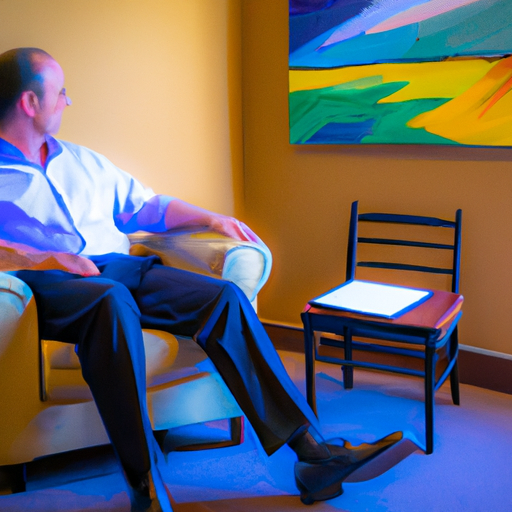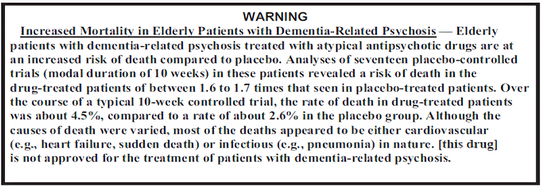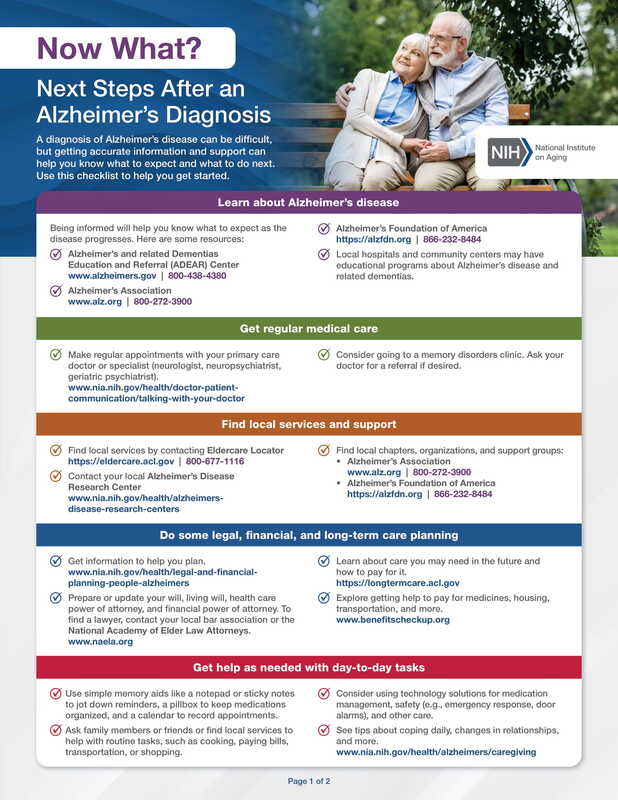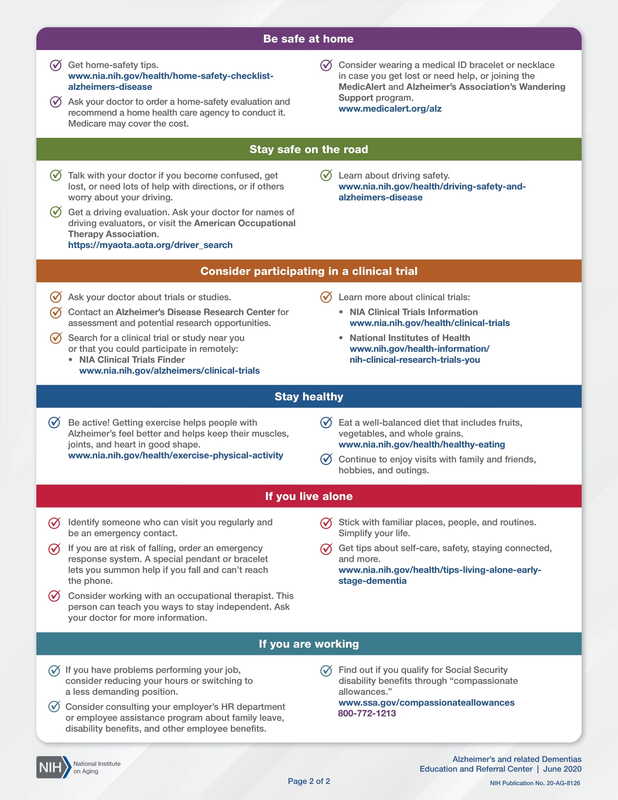|
With so many things to think about when caring for an ill or disabled family member, it's easy to forget about taking care of yourself. Respite care is a vital part of self-care for caregivers, and yet it's often one of the first things to go when budgets get tight. Here's a quick overview of respite care and why it's so important.
The Purpose of Respite Care Respite care is designed to give caregivers a temporary break from their day-to-day responsibilities. This is especially important for those with elderly parents or sick children, as it can be difficult and mentally draining to care for them 24/7. Respite care services can range from short-term stays at an assisted living facility to regular visits from a home care health aide. Furthermore, respite care doesn’t need to come from an outside source; in some cases, family members or friends can step in and provide temporary relief. Whichever option is chosen, the purpose of respite care is always the same: to allow the main caregiver some time to rest and recuperate before returning to the daily demands of caring for another person. This type of support helps ensure that both the primary caregiver and the person being cared for remain healthy and well balanced. With access to respite care, caregivers can rest easy knowing that they are not alone in addressing their daily challenges. Different Types of Respite Care Available Depending on the individual’s needs, respite care can take many forms. In-home services are designed to meet the needs of those who require short-term assistance with tasks such as shopping, meal preparation, personal care, and housekeeping. For individuals who need more intensive assistance due to physical or cognitive limitations, there are specialized respite programs. These programs provide a range of activities within a supervised environment that focuses on enhancing the quality of life for the participant. Those with a non-medical needs can also benefit from different types of respite care such as residential facilities and daycare centers. Residential facilities provide a safe and secure setting for participants, often including recreational activities and social events. Adult Daycare centers offer opportunities to engage in planned activities in addition to providing temporary relief from the demands of caregiving responsibilities. Respite care services can be tailored to meet the unique needs of each individual and provide much-needed rest and relaxation for everyone involved in caring for someone's well-being. By offering multiple options, these services help safeguard the health and safety of both caregivers and those they care for. Tips for Choosing the Right Respite Care Provider Finding the right respite care provider can be a daunting task. Investing in quality respite care will help to relieve stress and provide peace of mind. However, to make sure that you are getting the best services possible requires some careful consideration. One tip is to research local agency options so that you have some understanding of the different available services in your area. It’s also important to ask about the qualifications and backgrounds of caregivers; many people appreciate learning about industry certifications and training when considering different providers. Make sure that the costs are appropriate and understandable; establishing payment terms ahead of time is essential for reducing misunderstandings and ensuring a smooth exchange between parties. Finally, connect with other families receiving help from local service providers; reading online reviews can give you a better understanding of what others think than any brochure or advertisement ever could. How to Make the Most of Respite Care Services If you're looking to make the most out of respite care, there are several steps that should be taken. First, research available providers in your area and select one that best meets your needs. Make sure to go over all of their policies and fees before making any commitments. Then, draw up a detailed plan outlining any special needs or preferences of those involved in order for the provider to administer the best possible service. Finally, coordinate with both parties in order for an efficient transfer of information and responsibilities during the respite care period. By following these steps and taking full advantage of respite care services when needed, you can make sure that everyone gets the break they require without sacrificing the quality of care or compromising safety. The Importance of Self-Care for Caregivers Being a caregiver can be a demanding and emotionally draining experience. Although caregivers are focused on caring for their loved one, they must also take time to care for themselves. Ignoring self-care can lead to physical and mental exhaustion, which makes it harder to meet their responsibilities. Regularly taking time away from their duties allows caregivers to relax and recharge, allowing them to come back with renewed energy and enthusiasm. Self-care also helps caregivers form positive and meaningful connections with their loved ones. Having a healthier emotional state can help caregivers respond appropriately in difficult situations and focus on the positives instead of dwelling on the negatives. Furthermore, engaging in activities such as exercising or going for walks can promote healthier eating habits and exercise routines, which are important aspects of self-care that should not be neglected. All in all, self-care is an essential part of being an effective caregiver, enabling them to better address their loved one’s medical needs while still maintaining their own well-being. Why You Should Consider Respite Care Respite care is a valuable resource for anyone caring for a loved one. It can serve as both a short-term and long-term solution, providing much-needed breaks from care duties while ensuring that the loved one’s needs are met. Respite care can be provided by family members or professional caregivers, with some services offered free of charge and others requiring payment. Respite care can take place in a variety of settings including the home, adult daycares, rehabilitation centers, and residential care facilities. Healthcare professionals such as social workers or geriatric care managers can help to identify respite care options that best suit individual needs. Overall, respite care serves an important role in providing support for caregivers and ensuring that loved ones receive the quality care they need during challenging times. Respite care provides a much-needed break for caregivers while also ensuring that their loved ones receive the high level of care and attention they need. With respite care, caregivers can enjoy some well-deserved free time while knowing that their loved ones are being expertly cared for. Whichever type of respite care you choose, make sure to take advantage of all the services offered so you can return refreshed and ready to continue providing top-notch caregiving. Finally, don’t forget to take care of yourself during this time. By making use of respite care services and taking some time for self-care, you can be the best caregiver possible for your loved one. For seniors, the option of co-living has many appealing benefits. Co-living by its nature is designed to foster a sense of community and provide opportunities for social interactions. In addition, these spaces often include shared amenities such as kitchens, laundry facilities, and common areas. As a result, residents can enjoy a maintenance-free lifestyle while still maintaining their independence. For seniors who are looking for an alternative to traditional retirement living, co-living is an intriguing option.
Benefits of co-living include social interaction, safety, and support For seniors, co-living can provide many benefits. Perhaps the most important is the social interaction that it offers. As we age, it can be harder to stay connected with friends and family. Co-living gives seniors the opportunity to build relationships with people who are at a similar stage in life. In addition, co-living arrangements can offer seniors a sense of safety and support. For example, living with a group of people can help to deter crime, and if one member of the group needs assistance, there are usually others nearby who can help. These arrangements often provide access to amenities and services that might be difficult for seniors to obtain on their own, such as transportation or housekeeping. Co-living arrangements available for seniors Intentional Community Intentional communities have been growing in popularity recently as more and more people are looking for ways to connect with others who share their same values and goals. While there are many different types of intentional communities, they all share a common purpose or goal, such as sustainability or living off the grid. One of the great things about intentional communities is that they offer a sense of community that can be hard to find in today's world. In an intentional community, everyone is on the same page, working together towards a common goal. This can create a strong sense of connection and support, which is something many people are longing for. If you're interested in joining an intentional community, there are many different options out there. Do your research and find one that fits your needs and your values. Having roommates as a senior citizen Living with roommates as a senior citizen can have many benefits. It can be a great way to make new friends, get help with chores, and enjoy social activities together. Seniors often choose to live in communal settings because it can be difficult to live alone. It can be lonely, and some seniors feel lost without the support of close friend or family. If you're thinking about living with roommates as a senior citizen, here are some things to keep in mind: -Consider your needs and preferences. What do you want from your living situation? Do you need help with chores or transportation? How much socializing do you prefer? Would you like to go on regular outings together or individually? -Think about the type of people you want to live with. Do you want to live with friends or family members? -Talk to your family and friends about your options. They may have suggestions or know of someone who is looking for a roommate arrangement. -Investigate different living options and ask lots of questions. Talk to other seniors who are already living in the type of arrangement you're considering. This will give you a better idea of what to expect and whether it's the right choice for you. Seniors sharing a home with their adult children. It's no secret that the cost of living continues to rise, and for seniors on a fixed income, it can be difficult to make ends meet. In many cases, the only option is to move in with their children. While this may seem like a solution at first, it can potentially lead to tension and conflict. There are several factors to consider when making the decision to move in with your adult children. First, you need to assess whether everyone involved is comfortable with the arrangement. It's important to set boundaries and establish rules early on so that there is no confusion about who is responsible for what. If you do decide to move with your children, it's important that you continue to maintain your independence and dignity. You should never feel like you're a burden or that you're taking advantage of your children. The goal should be for everyone involved to live harmoniously under one roof. Accessory dwelling units for seniors Accessory dwelling units, or ADUs, are becoming an increasingly popular option for seniors who want to downsize and live independently. ADUs are small, self-contained apartments located on the same property as a larger home. They can be used for aging parents, adult children, or other family members. ADUs offer many benefits for seniors. They provide a sense of community and support, they are convenient and easy to maintain, and they can help keep people connected to their families and friends. In addition, ADUs can often be rented out as income-producing properties, which can help offset the cost of living in them. There are several things to consider when designing an ADU for seniors. First, it is important to make sure that the unit is accessible and meets all safety requirements. Second, it is important to create a comfortable and welcoming space that feels like home. Third, it is important to choose materials and finishes that are easy to care for and age friendly. Overall, ADUs offer a great option for seniors who want to downsize while still maintaining their independence." 55 and over communities for older adults There are many different types of 55 and over communities for older adults. Some are just for people who want to live in a community with other seniors, while others have more activities and amenities. It really depends on what you're looking for in a retirement community. Some people may find that they need more social interaction than what is offered in a 55 and over community, and may prefer to live in an assisted living community. However, there are many different types of these facilities, so it's important to do your research before choosing one. Seniors choosing to move into assisted living Choosing to move into an assisted living facility is not an easy decision. There are many factors to consider, such as cost, location and services offered. But for many seniors, the benefits of assisted living far outweigh the drawbacks. Assisted living facilities provide several important services that can be difficult for seniors to manage on their own. These include meals, laundry service, housekeeping, and assistance with activities of daily living. In addition, most assisted living facilities offer social activities and opportunities for residents to get involved in the community. There are also a number of assisted living arrangements that cater to seniors with specific needs, such as those with dementia or those who require long-term care. Whatever the type of co-living arrangement, it is important to choose one that meets your individual needs and preferences. Adult Family Home An adult family home offers many of the benefits of assisted living such as help with medication, bathing and other activities of daily living but on a much smaller scale. An adult family home is a great option for those who need some assistance with daily living activities, but don't want or need the full-blown assistance that comes with an assisted living facility. These homes are generally run by independent operators who provide personal care and attention for residents. While Washington state allows for up to eight individuals to live in an adult family home, six residents seem to be the most common arrangement. These settings can offer many of the same benefits as assisted living, such as help with medication, bathing, and other activities, but on a more personal level. If you're considering an adult family home for yourself or a loved one, be sure to ask about the specific services offered and what the home's policies are in regard to accommodating special needs. How to choose the right co-living option for an individual senior When choosing a co-living option, seniors should consider their own unique circumstances. For example, some seniors may prefer an intimate setting with only a few other residents, while others may enjoy the social atmosphere of a larger community. Other factors to consider include the level of care and assistance that is available, the cost of living in the community, and its location. By taking the time to carefully evaluate their options, seniors can ensure that they choose the right co-living arrangement for their individual needs and lifestyle. Tips for making the most out of a co-living arrangement Co-living arrangements can be a great way to save money and meet new people, but it's important to make sure that everyone is on the same page in terms of expectations and house rules. Here are a few tips to help you make the most out of your co-living experience: 1. Establish ground rules from the start. This will help to avoid any misunderstandings or conflict down the road. Make sure to discuss things like quiet hours, visitors, and cleaning schedules. 2. Get to know your roommates. Take some time to get to know your new roommates and learn about their interests, habits, and schedule. This will help you figure out how to best share your living space. 3. Be respectful of each other's space. Even if you're living in close quarters, it's important to respect each other's privacy and personal space. This includes things like Respect each other’s belongings and keep common areas tidy. Following these simple tips will help you make the most out of your co-living arrangement and enjoy a harmonious living situation. While co-living isn’t for everyone, it can be a great option for seniors who are looking for social interaction, support, and safety. There are many different types of co-living arrangements available, so it’s important to do your research to find the one that best suits your needs. With a little bit of planning and effort, you can make the most out of your co-living situation and enjoy all the benefits it has to offer. AI is often thought of as a technology that is cold and emotionless. However, in recent years there has been an increase in the use of AI in art therapy. This is because AI can be used to create works of art that are unique and personalized for each individual based on minimal input from the user. This makes it a valuable tool for helping people to express themselves and work through their emotions. In this article, we will explore the benefits of using AI in art therapy.
What is art therapy? Art therapy is a type of psychotherapy that uses art-making to facilitate healing and self-expression. Art therapy can be an effective treatment for people of all ages and backgrounds, but it is especially well-suited for older adults. The aging process can often lead to feelings of isolation, loneliness, and depression, as well as diminished cognitive functioning. Art therapy can help to address these issues by providing a creative outlet that helps seniors to express themselves and connect with others. For those with dementia, art therapy can also help to preserve memories and boost self-esteem. In addition, art therapy can provide a sense of calm and relief from anxiety and stress. Ultimately, art therapy can be a valuable tool for promoting physical, mental, and emotional wellbeing in older adults. The benefits of art therapy Art therapy is based on the premise that the creative process can be used to help people explore their emotions, reduce stress, and resolve conflict. Research has shown that art therapy can be an effective treatment for a wide range of mental health conditions, including anxiety, depression, PTSD, and addiction. Art therapy is also well-suited to those who may not feel comfortable talking about their feelings. The creative process can provide a safe outlet for emotions that may be difficult to express in words. The process can also help delve into the subconscious and help people to access parts of their emotions that they may not even be aware of on a conscious level. In addition, the act of creating art can be calming and therapeutic in itself. Art therapy can help people to develop new coping skills and build self-confidence. How to get started with art therapy Getting started with art therapy is easy, all you need is a comfortable space to work in and some basic supplies. Many people choose to use drawing or painting as their primary medium, but there are no rules, you can experiment with any type of art that you enjoy. Allow yourself to be creative and open-minded, you can experiment to your heart's content. The most important thing that one needs in order benefit from art therapy is to simply allow yourself some free exploration time while being open minded enough about where these experiments may lead next. If you're not sure where to start, consider working with a certified art therapist who can help you explore your unique needs and preferences. With a little time and effort, you can start reaping the benefits. AI art therapy In recent years, there has been growing interest in using AI to create artworks that can be used in therapy. AI art therapy is a relatively new approach that combines the benefits of art therapy with the potential of AI technology. AI art therapy projects often involve creating digital artworks that respond to the user's emotional state. For example, a user may input their feelings into an AI text-to-image program, and the software will generate a corresponding image. The idea is that by interacting with the artwork, the user will be able to process and understand their emotions in a new way. Because Ai art is generated by a computer, it doesn't require the same level of physical dexterity as traditional artwork. This makes it an ideal form of expression for those with physical disabilities. In addition, because Ai art is created using an algorithm, it can be a less time consuming process allowing participants with certain mental conditions to stay engaged. Thanks to advances in this technology, anyone can create stunning works of art, regardless of their physical or mental limitations. If you are interested in trying AI art therapy, there are a number of ways to get started. There are several online platforms that allow you to create your own digital artworks, or you can participate in a session with a trained therapist. This is still a relatively new field, so there is still much research being conducted into its efficacy. However, initial studies suggest, like traditional art therapy AI art therapy can be effective for treating conditions such as anxiety, depression, and post-traumatic stress disorder (PTSD). 4 Tips for making the most out of art therapy 1. Be open to trying new things. Art therapy can involve a wide range of activities, from painting and sculpture to pottery and collage. Don’t be afraid to step outside of your comfort zone and try something new. 2. Trust the process. The goal of art therapy is not to create a masterpiece but to use the creative process as a way to explore your thoughts and feelings. Let go of your expectations and allow yourself to simply relax and create. 3. Be patient. It may take some time to see results from art therapy. But trust that the process is working, even if you don’t see immediate results. 4. Seek professional help. If you’re struggling with mental health issues, consider seeking professional help from an art therapist or other mental health provider who can offer guidance and support. Art therapy provides an outlet for people to express themselves and can help others understand the emotions and thoughts they may otherwise have difficulty expressing. It can also provide cognitive stimulation and a sense of accomplishment or pride. While art therapists are trained professionals, there are many ways to get started with art therapy on your own. You can start by incorporating some simple art projects into your regular routine. There are also apps and online programs that Offer AI-assisted art, which can be a great option for those who may have physical limitations. Whatever approach you take, remember to keep the same goals in mind: to have fun, bond with your loved ones, and connect more through creativity. Even though caregivers have good intentions they can often take over too much and undermine a senior’s self-confidence. It is common for caregivers to want to do everything they can to care for their clients, however, this can lead to caregivers taking on too much and inadvertently undermining a senior’s self-esteem and confidence. When caregivers try to do everything, it can prevent seniors from being able to perform tasks for themselves, which can lead to a loss of independence. Additionally, caregivers may unintentionally invade a senior’s privacy or make decisions on their behalf without consulting them first. While caregivers may have good intentions, it is important to strike a balance between providing care and allowing seniors to retain their independence.
How caregivers can unintentionally undermine clients' self-esteem One of the challenges of caregiving is finding the balance between providing support and giving clients the space to feel capable and independent. When caregivers inadvertently do things that undermine a client's self-esteem, it can jeopardize the client's physical and emotional well-being. One way this happens is when caregivers try to do everything for the client out of a sense of wanting to be helpful. However, this can send the message that the client is not capable of taking care of themselves, which can lead to feelings of inadequacy. Another way caregivers can unintentionally undermine a client's self-esteem is by constantly pointing out their mistakes or shortcomings. This can foster a feeling of shame or incompetence and make it difficult for clients to feel confident about their abilities. Caregivers need to be aware of how their words and actions can affect a client's self-esteem and take care to avoid inadvertently sending negative messages. The people in their care may be experiencing a great deal of stress and anxiety. They may be confused, scared, or overwhelmed. If caregivers are not careful with their words and actions, they could inadvertently make the situation worse. Second, caregivers need to be aware of their own emotions. They may be under a great deal of stress themselves, and they need to be careful that they do not take out their own frustrations on the people in their care. The importance of building up clients' self-confidence As a caregiver, it is always important to be aware of your own competence and to ensure that you are able to meet the needs of your clients. However, it is also important to remember that your clients may not have the same level of understanding or expertise as you do. As such, it is important to take the time to build up their confidence. This can involve providing them with information and resources, explaining things in simple terms, or even demonstrating how to do something. By taking the time to build up your clients' confidence, you can help ensure that they are able to make informed decisions and choices, and that they understand what you are doing and why. In turn, this can help to build trust between you and your clients which will ultimately lead to better outcomes for all involved. 5 Tips for caregivers on how to build up their clients' self-confidence Caregivers play an important role in helping their clients build up self-confidence. Here are a few tips to keep in mind: 1. Encourage your client to try new things and step outside their comfort zone. This can help them to see that they are capable of more than they thought. 2. Talk about positive past experiences and accomplishments. This will help to remind them of their own strengths and abilities. 3. Help them to set realistic goals and celebrate each small victory along the way. This will give them a sense of progress and achievement. 4. Listen attentively and be supportive without judgement. This will provide a safe space for them to express themselves and feel heard. 5. Encourage them to take care of themselves physically, mentally, and emotionally. This will help them to feel stronger and more capable overall. Caregivers need to be mindful of how they interact with their clients, as their words and actions can unintentionally undermine a client's self-esteem and self-confidence. It is important to build up a client's confidence in order to help them feel good in mind and body. There are many small ways that caregivers can build up their clients' self-esteem, such as using encouraging language, being sincere with compliments, and avoiding comparisons. By taking these steps, caregivers can provide the care and support that their clients need to thrive. There is a silent crisis happening in America, and it is affecting the baby boomer generation. Increasing numbers of seniors are finding themselves without a place to call home. While the reasons for this trend are numerous and complex, a lack of affordable housing and insufficient social safety nets are two major contributing factors. This problem is not only heart-wrenching, it also puts a strain on already overburdened healthcare and social services systems. The number of homeless people over 55 is expected to spike to 225,000 nationwide by 2026 — a 32% jump from 170,000 in 2017 — according to a University of Pennsylvania study. In this blog post, we'll take a look at the problem of senior homelessness in America and suggest some possible solutions.
There are a number of reasons why homelessness is on the rise among baby boomers. One of the most significant factors is the increasing cost of housing. In many parts of the country, rent and mortgage payments have become unaffordable for people on fixed incomes. Additionally, many baby boomers have accumulated large amounts of debt, which can make it difficult to maintain stable housing. Medical bills, credit card debts, and even student loans can all contribute to homelessness. Another major contributing factor to this trend is the loss of a spouse. For many older Americans, their spouse is their biggest source of financial and emotional support. When a spouse dies, the surviving partner often struggles to cope with the loss both mentally and financially. Without a steady income or a support system in place, it can be difficult to keep up with mortgage payments or other bills. As a result, many widowed Americans end up facing foreclosure and ultimately homelessness. While this issue is often overlooked, it is important to remember that homelessness can affect people of all ages and from all walks of life. For many seniors health conditions may prevent them from returning to work or prevent them from working enough hours to get by. Even for those who are able to go back to work, finding a job can be especially difficult. With years of experience, seniors often have the skills that businesses are looking for. However, they may also have gaps in their employment history or be unfamiliar with modern technology. As a result, many seniors find themselves unemployed or underemployed. Sadly, once seniors become homeless, it is very difficult for them to break out of the cycle. They often have nowhere to turn for help and end up relying on already overburdened shelters. This puts a strain on our healthcare system as well, because homeless seniors are more likely to use emergency rooms for their primary care needs. The additional stress placed on these already under-resourced facilities can lead to even more financial burdens for cities and states across the country. Unfortunately, there is no silver bullet that will solve homelessness however there are small steps you can take to help homeless seniors. One way is to donate money or items to organizations that serve them, such as food pantries and shelters. Another way is to volunteer your time at organizations such as Meals on Wheels. You can also advocate for policies that would provide more affordable housing and other assistance to homeless seniors. And finally, you can spread awareness about the issue by talking to friends and family about it, or by writing about it or sharing information online. Every little bit helps, and by taking action, you can make a difference in the lives of homeless seniors. If you are experiencing homelessness or know a senior in Spokane who needs help these organizations may be able to lend some assistance: SPOKANE NEIGHBORHOOD ACTION PARTNERS 500 S Stone St, Spokane, Washington CREDIT.ORG - SPOKANE 601 W 1st Ave Ste 1400, Spokane, Washington COMMUNITY FRAMEWORKS 907 W Riverside Ave, Spokane, Washington Nationwide you can find homelessness assistance programs through the department of Housing and Urban Development (HUD) As our population continues to age, more and more people are finding themselves in the position of needing to obtain a guardianship for an elderly family member. A guardianship is a legal relationship between a person who is unable to care for themselves (the ward) and a person or organization (the guardian) that is willing and able to take on that responsibility.
There are many reasons why an elderly person may need a guardian. They may be suffering from dementia or Alzheimer's disease and no longer able to make decisions for themselves. They may be mentally incapacitated and unable to care for their own needs. Whatever the reason, if you find yourself in the position of needing to obtain a guardianship, it is important to understand the process and what it entails. The Process of Setting Up a Guardianship 1. A family member or friend files a petition with the court asking to be appointed as guardian. 2. The court reviews the petition and sets a hearing date. The ward must be notified of the hearing date so they can attend if they wish. 3. At the hearing, the petitioner must prove that the appointment of a guardian is necessary and in the best interests of the ward. The court may also appoint an attorney to represent the interests of the ward during this process. 4. After reviewing all evidence presented at the hearing, the court will make its decision and issue an order appointing or denying the request for guardianship. 5. If guardianship is granted, the court will issue an order detailing what powers and responsibilities the guardian has regarding the care and control of the ward and their property. The guardian must then follow all rules and regulations set forth in that order. 6. The guardian has ongoing duties to maintain accurate records of all receipts and expenditures made on behalf of the ward, as well as to file periodic reports with the court detailing their actions taken on behalf of the ward. At the hearing, the judge will appoint a lawyer for the ward (if the ward does not already have one) and will appoint an investigator from Adult Protective Services (APS) to look into the situation. The investigator will meet with the ward, as well as with any other family members or friends who might be involved in their care. After completing their investigation, the investigator will make a recommendation to the judge about whether or not they think a guardianship is necessary. If the judge decides that a guardianship is necessary, they will appoint the guardian and set out specific guidelines about what that guardian is responsible for. In most cases, the guardian is responsible for making all medical decisions for the ward, as well as decisions about where they will live and what type of care they will receive. The guardian is also responsible for making sure that any bills are paid and that the ward's property is taken care of. Fiduciary Responsibility A guardian must act in a fiduciary capacity. This means that they are legally obligated to manage the finances and property of the person in that person’s best interest. This means making decisions about their finances and property that will benefit individual long term. If you intend to act as a guardian for a loved one here are some tips to help you navigate your fiduciary responsibilities as a guardian: 1. Communicate with your ward: It is important to keep lines of communication open with the person you are appointed to guardianship. They should be aware of all decisions being made on their behalf and why those decisions are being made. 2. Keep records: Keep detailed records of all decisions and financial transactions made on behalf of your ward. This will help you stay organized and be able to show why certain decisions were made if there is ever any question about it. 3. Act in their best interest: This is perhaps the most important tip of all. Always act in what you believe to be the best interest of your ward, even if it is not what they want or what is easy for you. Long-term decisions are often difficult to make, but they are necessary in order to protect your ward's interests. A guardianship is a complicated legal process, but it can be necessary in order to ensure that an elderly person receives the care they need. If you find yourself in this situation, it is important to understand what is involved in obtaining a guardianship so that you can be prepared for what lies ahead. Although a guardianship can be a big responsibility, it can also be very rewarding. If you have been appointed as a guardian, make sure you understand your powers and duties so that you can fulfill your role to the best of your ability. You've been noticing some changes in your elderly parent or grandparent lately. Maybe they're holding on to things a little too tightly, or their home is starting to look a bit like a hoarder's paradise. Or, perhaps you've seen an episode of "Hoarders" and you're wondering if your loved one might be suffering from the same condition. Whatever the case may be, it's important to approach the situation with care and sensitivity. After all, this is someone you love and you want what's best for them. Here are five tips for helping an older adult overcome hoarding:
1. Talk to them about their why The first step is to have a conversation with your loved one about their hoarding habits. It's important to do this in a non-judgmental way, as most people who hoard are already aware that their behavior is problematic but feel powerless to change it. Simply let them know that you're concerned and want to help them find a solution. Oftentimes, people hoard because they're afraid of losing something important. It could be a sentimental item from their past or something they see as valuable. Talk to your loved one about why they're holding on to things and see if there's a way to address that underlying fear. 2. Get rid of the clutter Once you've had the initial conversation, it's time to start decluttering their home. This is no easy task, and it will likely take some time (and patience!). But, it's important to get rid of any items that are no longer being used or needed. You can start by having them sort through their belongings, keeping only what is truly important to them. Then, you can slowly begin getting rid of the rest. They definitely don’t need back issues of people magazine or 75 pickle jars. 3. Identify things to donate or sell Once you've gone through your loved one's belongings, you can start donation or selling items of value. Sometimes knowing items will go to someone who needs it can help them feel more comfortable letting things go. There are likely local organizations that would love to receive donations and selling items can bring in some extra cash. 4. Organize what remains Once you've decluttered their home, it's time to start organizing what remains. This will help them find things more easily and prevent new clutter from taking over their home again. There are many different ways you can organize their belongings, so find a system that works best for them and make sure they're involved in the process. 5. Seek professional help If the hoarding is becoming a health or safety issue don't hesitate to seek professional help. There are many counselors and therapists who specialize in helping people with this condition, and they can provide valuable support and guidance. In some cases, medication may also be necessary to help manage anxiety or obsessive-compulsive disorder (OCD), which can often be an underlying cause of hoarding behavior. Hoarding is a complex issue that can be difficult to understand, let alone deal with. But if you're caring for an older adult who's started to hoard, it's important to take action. There are ways to help an older adult overcome this condition. By decluttering their home, organizing their belongings, setting limits on what they can keep, and seeking professional help if necessary, you can provide them with the support they need to live a happier and healthier life free from the clutches of hoarding.
Dementia is a disease that affects millions of people worldwide, and the numbers are only increasing as the population ages. One of the most difficult aspects of caring for a person with dementia is managing their behaviors. Outbursts of anger, aggression, and hallucinations are common in dementia patients, and they can be very distressing for both the patient and for the caregiver. In some cases, antipsychotic medication may be prescribed in an effort to manage these behaviors.
What Are Antipsychotic Medications? Antipsychotic medications are a class of drugs that are used to treat psychiatric conditions such as schizophrenia, bipolar disorder, and severe depression. These drugs work by changing the levels of certain chemicals in the brain that are involved in mood and behavior. Common antipsychotic medications include olanzapine, quetiapine, risperidone, and haloperidol. Why Are Antipsychotics Used to Treat Patients with Dementia? Patients with dementia often experience changes in mood or behavior that can be disruptive both to them and to those around them. Because antipsychotic medications can help manage these symptoms, they are sometimes prescribed “off-label” for patients with dementia even though they have not been specifically approved for this use by the FDA. However, because of the potential risks associated with these drugs, they should be used only when other treatments have failed or are not tolerated and only after a careful discussion between the patient’s caregiver and healthcare professional about the risks and benefits of treatment. The Antipsychotic Medication Black Box Warning for People with Dementia A black box warning is the strongest type of warning from the FDA. It is given to prescription medications that have potentially serious side effects. The FDA requires that manufacturers include black box warnings on the labeling of these medications. The purpose of a black box warning is to make sure that both patients and caregivers are aware of the possible risks associated with taking the medication. The specific black box warning will vary slightly for each medication but will usually read as follows: “Increased death and heart-related side effects in seniors with dementia-related psychosis: This medication isn’t approved for treating psychosis related to dementia. There is an increased risk of death in seniors (ages 65 years or older) with this condition who take this drug. Most deaths are caused by heart problems such as heart failure, or infectious conditions such as pneumonia” Generally, you can find these warnings printed on the label of your medication or on the patient information sheet provided by your pharmacy. Deciding whether or not to use antipsychotic medications with a dementia patient is a difficult decision that should only be made after careful consideration. There are potential risks and side effects associated with these medications, but there are also potential benefits. Ultimately, the decision about whether or not to use antipsychotic medication should be made by the patient's doctor in consultation with the patient's caregiver. 1. Write down your questions in advance.
2. Bring a list of medications you're taking. 3. Be prepared to talk about your symptoms in detail. 4. Take notes during the appointment. 5. Don't be afraid to ask for clarifications or more information. Going to the doctor can be a stressful task, especially if you don't know what to expect. But if you take the time to prepare for your appointment, you can make the most of the time you have with your doctor. Here are five tips on how to do just that: Make a list of questions beforehand It can be helpful to make a list of questions beforehand so that you don't forget anything during the appointment. This way, you can be sure to get all of the information you need. Bring a list of medications you’re taking It can also be helpful to bring along a list of medications including over the counter supplements that you are taking. This will help your doctor determine if there are any potential interactions. It is important to give your doctor accurate information so they can properly diagnose and treat any conditions you may have. Be prepared to talk about your symptoms in detail Be as specific as possible when describing your symptoms. Are symptoms generally better or worse in the morning or the evening? Are symptoms interfering with your sleep? Be honest with your answers. It is important to give your doctor accurate information and the more information you can provide, the better. Take notes during the appointment It can be helpful to take notes during the appointment so that you don't forget what was discussed. If you have difficulty writing you may also want to consider recording the appointment so that you can go back and listen to it again later on. Always ask for permission before recording. Ask for clarification if needed Don't hesitate to ask for clarification if there is anything you don't understand during the appointment. Medical professional can sometimes speak using medical terms or abbreviations most people aren't familiar with. The doctor will be happy to explain in more detail if you ask so that you can make the best decisions for your loved one's care. Visiting the doctor doesn't have to be a stressful experience. By following these five simple tips, you can make sure that you are getting the most out of your appointment. Remember to come prepared with questions, bring a list of medications, take notes during the appointment, be prepared to talk about your symptoms in detail, and don’t be afraid to ask for clarification when needed. With these things in mind, you can take control of your health and get the care you need and deserve. If you're reading this, it's likely that you or someone you love has recently been diagnosed with Alzheimer's disease. While this news can be devastating, it's important to remember that you are not alone. There are millions of people across the globe who are currently living with Alzheimer's, and many more who are providing care for loved ones with the disease. In this blog post, we'll provide some tips for caregivers to help you navigate this new chapter in your life.
1. Accept the diagnosis. This may be one of the most difficult things to do after an Alzheimer's diagnosis, but it is crucial in order to move forward. Denial will only make the situation more difficult for both you and your loved one. If you need help accepting the diagnosis, consider seeking out a support group or speaking to a counsellor. Remember, you are not alone in this. 2. Learn as much as you can about the disease. The more you know about Alzheimer's, the better equipped you will be to deal with the challenges it presents. There are many excellent resources available online and through local organizations like the Alzheimer's Association. Take advantage of these resources so that you can be prepared for what lies ahead. 3. Prepare legal and financial plans. Legal planning may involve Powers of Attorney for both finances and health care. This ensures that someone else can make decisions for your loved one when they are no longer able to do so. Financial planning can help to ensure that assets are protected and that your family is taken care of financially. Long-term care planning involves making decisions about where the person will live as the disease progresses and how care will be provided for. A Will, will make sure assets and final affairs are handled in accordance with your loved ones wishes. These can be difficult conversations to have, but they are important ones. Putting a plan in place early on can help to make things a little easier down the road. 4. Conduct a home safety assessment. After an Alzheimer's diagnosis, it's important to take steps to ensure the safety of your loved one. This may include making changes to the home environment, such as removing hazards and installing safety features like handrails and grab bars. You may also need to provide close supervision and assistance with activities of daily living. In some cases, it may be necessary to move your loved one into a facility that can provide the level of care and support they require. Regardless of the approach you take, safety should be a top priority in your caregiving plan. By taking proactive measures, you can help your loved one live a safe and fulfilling life despite their diagnosis. 5. Put together a care team. Caring for someone with Alzheimer's can be overwhelming, so it's important to build a supportive network of family and friends who can help with both practical tasks and emotional support. You should also consider enlisting the help of professional caregivers, such as a home health aide or registered nurse. This can give you some much-needed respite from your caregiving duties and ensure that your loved one is receiving high-quality care when you can't be there yourself. 6. Make sure your loved one is getting proper medical treatment. Alzheimer's is a progressive disease, which means that it will continue to get worse over time. However, there are treatments available that can help slow down its progression and ease some of its symptoms. Work with your loved one's doctor to develop a treatment plan that meets their needs and includes both medical and non-medical interventions. Caring for someone with Alzheimer's disease can be challenging, but it is also rewarding. By taking the time to learn about the disease and put together a supportive care team, you can make sure that your loved one receives the best possible care during this difficult time. |
AuthorTyice Strahl Categories
All
Archives
May 2023
|
- Home
-
Settings
- Assisted Living
- Home Care
- Independent Living
- Memory Care
- Skilled Nursing
- Adult Family Homes
-
All Communities
>
- Aspen Quality Care
- Avamere South Hill
- Brighton Court
- Brookdale Nine Mile
- Brookdale Park Place
- Cheney Assisted Living
- Cherrywood Assisted Living
- Colonial Court
- Cornerstone Court
- Evergreen Fountains
- Palouse Country
- Fairview Assisted Living
- Fairwinds
- Fairwood
- Fieldstone Memory Care
- Good Samaritan
- Maplewood Gardens
- Moran Vista
- North Point Village
- Orchard Crest
- Pine Ridge Memory Care
- Emilie Court
- Ridgeview Place
- Riverview Retirement
- Rockwood Retirement Community
- Rose Pointe Assisted Living
- Royal Park
- South Hill Village
- Sullivan Park Assisted Living
- Sunshine Health Facilities
- Touchmark Assisted Living
- Willow Grove
- Wind River
- Alderwood Manor
- Franklin Hills
- Manor Care
- North Central Care Center
- Providence St Joseph
- Regency at Northpointe
- Royal Park Health and Rehabilitation
- Spokane Veterans Home
- The Gardens on University
- Spokane Assisted Living Directory
- Locations
- Services
- About
- Senior Living Blog
- Contact


















 RSS Feed
RSS Feed
